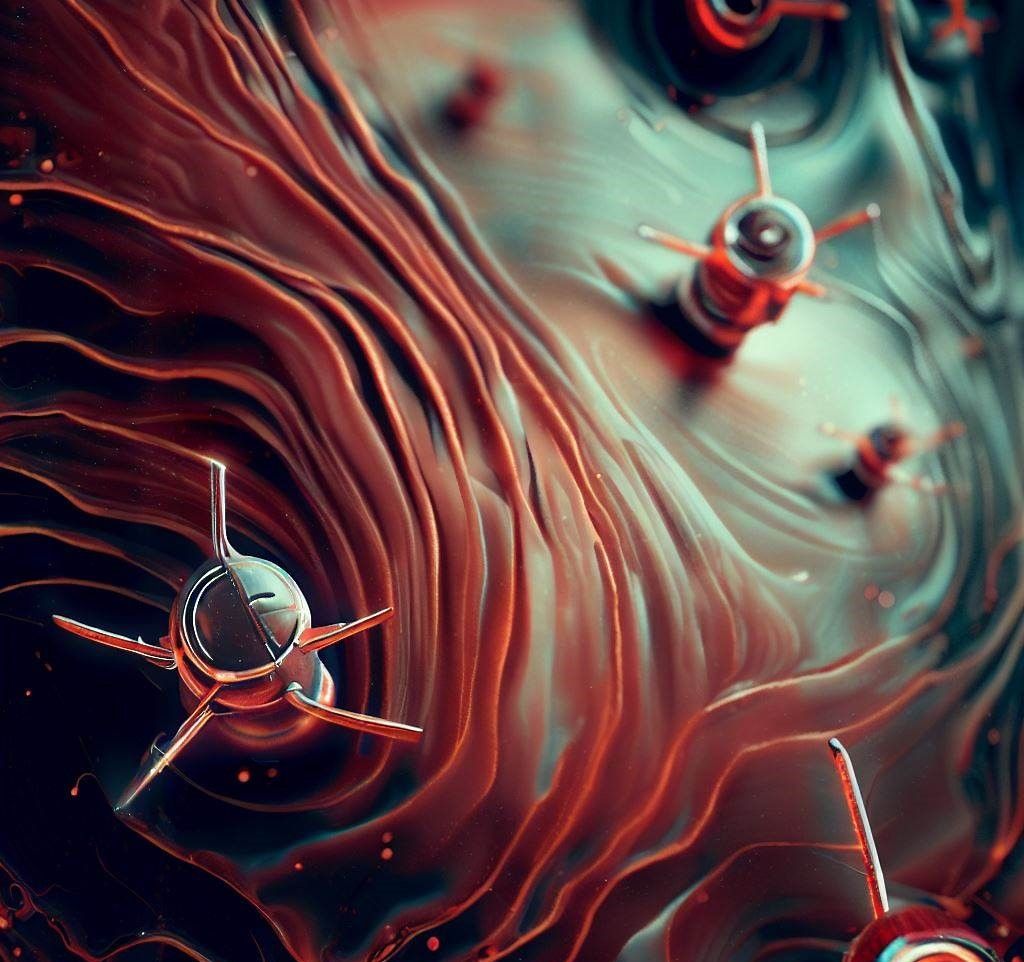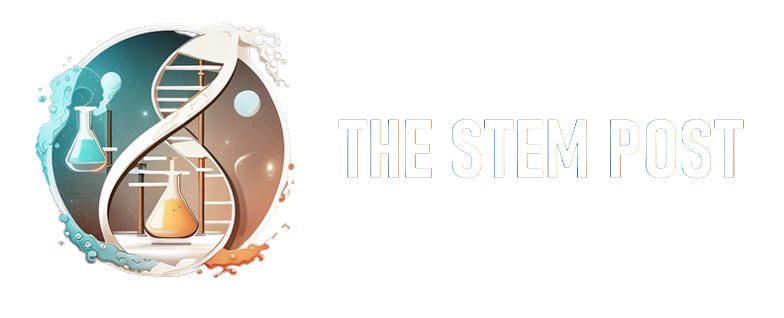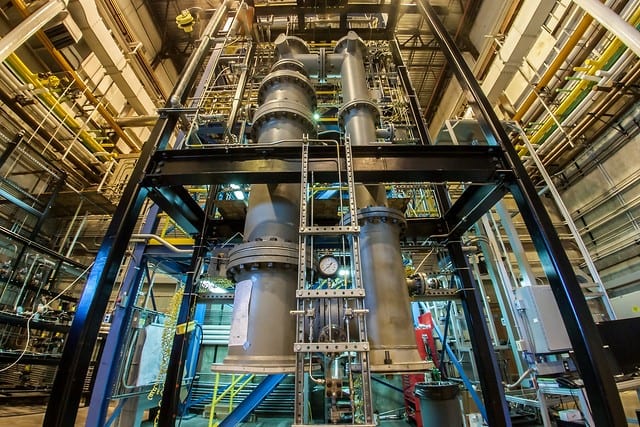The Nano-Revolution: How Tiny Electrical Components are Changing the World
Discover the world of nanotechnology and how it's changing the game in fields like medicine, electronics, and more. Explore the possibilities of this cutting-edge science.

The modern world has quickly ushered in the age of the nano-revolution. An epoch we now live in, that is defined by its infinitesimal miniaturization of electronic components. From the squarish and bulky phones of the 60s, that are the size of what we would only see nowadays in heavy duty modern military electronics, to miniature hand-held smart phones with greater computing power than that of the brightest minds humanity can offer. But how exactly has engineering led us down this path? Let us dive deeper.
The Birth of Nanoelectronics
Nanoelectronics refers to the development and innovation of electronic components at the nanoscale. The nanoscale refers to measurements at the nanometer, which is 10⁷ times, or ten million times smaller than a meter. To put that into perspective, if one meter was represented as a string with the length of the Earth’s circumference, a nanometer would be the length of the diameter of a bottle cap on that scale.
But how exactly did physicist and engineers begin this excursion into manipulating such small dimensions?
Well, it all started in the early 80s. The world was on its way to the digital age and the idea of hand-held portable computers began to shift from a quixotic pipe dream to a feasible possibility. The innovations made by Microsoft, IBM, and Apple in the late 70s further propelled this notion, and the size of electronic components was the only limiting factor that encumbered further progress. This in turn generated large incentives and proliferated demand for research into the field of miniaturizing electronics. Finally, in 1981, an important breakthrough that led to the nano-revolution came into fruition; the birth of the Scanning Tunnelling Microscope (STM) – the ingenious inventions of Gerd Binnig and Heinrich Rohrer.


At the fundamental level, the Scanning Tunnelling Microscope is a type of microscope that facilitates scientists to observe and manipulate unimaginably small things like atoms and molecules. It functions by using a tiny, extremely sharp needle-like conducting tip (probe) that scans the surface of a material in an ultra-high vacuum. The probe is placed close to the surface and a very small electric current is passed through it. This current, which is known as tunnelling current, will show fluctuations when the probe passes over molecules and atoms, thereby allowing scientists to map these fluctuations in current to generate an image of the surface of a material with remarkable atomic-scale resolution.

Furthermore, scientists soon discovered that the tip of the probe can be used to exert a small force on individual atoms or molecules on the surface of the material. And this, ladies and gentlemen, was the epiphany that introduced nanomanipulation, which allowed scientists to manipulate individual atoms and molecules to create precise nanostructures.
From there, the field of nanotechnology exploded, culminating in the development of components such as nanowires, nanotubes, and quantum dots. These tiny marvels have paved the way for a new generation of electronic devices that are smaller, faster, and more energy-efficient than ever before.
Computing at Warp Speed
I would argue that the most significant implications of nanoelectronics are in the world of computing, specifically because of the effects of nanomanipulation methods on transistor size. Since the invention of transistors back in 1947 by the great physicists John Bardeen, Walter Brattain, and William Shockley, there has always been a tacit understanding among academics that shrinking transistors was a necessary prerequisite in developing more powerful computers. This inveterate consensus among the erudite scholars of academia engendered an interminable desire to continue finding ways to further shrink transistors – which saw prodigious progress with the advent of nanomanipulation in the 80s.
But first, what exactly are transistors? And why are they so important?
At its core, a transistor can be described as an electronic component that functions to amplify and switch electrical signals. It works through three layers of semiconductor material; silicon is commonly used because of its abundance and manipulability in electrical properties through doping. The three layers have specific names, with the middle layer being the base and the other two layers being emitter and collector.

To understand how it works, the emitter and collector are heavily doped, meaning they have a large number of free electrons. Conversely, the base is lightly doped, meaning it has a scarce number of free electrons. Thus, when a small current is applied to the base of the transistor, it causes the base to become more conductive which allows more electrons to flow from the emitter to the collector.
In other words, the transistor acts like a gatekeeper, letting electricity flow through or not depending on the voltage applied to its base. This allows transistors to amplify signals, switch circuits on and off, and perform other important functions in electronics. Therefore, by exploiting these functions, scientists and researchers discovered that transistors can be used to perform the three basic logic operations, which are “AND”, “OR”, and “NOT” through the following methods:
1. AND
This operation is performed when two or more transistors are connected in series, with their outputs connected to a common output. When all of the inputs are "on" (allowing current to flow), the output will be "on" as well. If any one of the inputs is "off" (blocking current), the output will be "off".
2. OR
This operation is performed when two or more transistors are connected in parallel, with their outputs connected to a common output. When any one of the inputs is "on", the output will be "on" as well. The output will only be "off" if all of the inputs are "off".
3. NOT
This operation is performed by connecting a transistor as an inverter, with the input connected to the base and the output taken from the collector. When the input is "on", the transistor is "off" and the output is "off". When the input is "off", the transistor is "on" and the output is "on".
Thus, by combining these basic logic operations, more complex operations such as NAND, NOR, XOR, and XNOR can be performed. However, this requires the usage of more transistors – which means more space. This is why shrinking transistors were deemed essential in innovating and building more powerful computer systems that are practical and not bulky and huge.
Now, with the expansion of nanomanipulation and nanoelectronics, scientists have successfully shrunk transistors to being only a few nanometers in length. Today's cutting-edge processors boast billions of transistors, able to compute an inexorable amount of logic operations in mind-boggling short periods of time. This miniaturization has fueled the information revolution, enabling the creation of smartphones, tablets, and laptops that are simultaneously more portable and more powerful.
Revolutionary Healthcare Solutions
Nanoelectronics are also showing a propitious future in transforming healthcare, with the advent of tiny sensors and medical devices that can monitor and treat patients with unprecedented precision. Although it’s still relatively rare in common medical practice, there are copious amounts of clinical trials and medical research being done in this field.
For example, recent studies have experimented with nanoscale biosensors that are implanted within the human body to track vital signs, such as blood pressure, heart rate, and glucose levels, in real-time. These sensors can wirelessly transmit data to healthcare providers, enabling them to deliver personalized, data-driven care. In fact, at the existing technology level, it is entirely possible to produce and manufacture these nano-biosensors. The only quandary is deciding which structure and materials are most suitable to produce this technology in large quantities while minimizing cost, as well as getting the necessary approvals from the relevant authorities.
Although it might be pretentious to suggest that nanotechnology could become the breakthrough that leads us to the panacea of all medical prognosis, the statement does bear some weight. I say this because of a few aspects of nanotechnology that can bypass the great challenges that exists within the medical field, such as:
1. Crossing the blood-brain barrier: The blood-brain barrier is a protective layer that prevents many drugs and therapies from reaching the brain. Nanoparticles can be engineered to cross this barrier and deliver drugs and therapies directly to the brain, opening up new treatment options for diseases such as Alzheimer's and Parkinson's which were previously deemed incurable.
2. Treating cancer: Cancer is notoriously difficult to treat because it involves the uncontrolled growth of cells in the body, and is usually unique to the individual. Nanoparticles however, can be designed to target cancer cells specifically, delivering drugs or other treatments directly to the tumor while simultaneously leaving healthy cells unharmed, which was impossible with other forms of treatment like chemotherapy.
3. Repairing damaged tissues: Damaged tissues such as nerves and spinal cords are difficult to repair because they do not regenerate easily. Nanotechnology can be used to create scaffolds and other structures that promote tissue regeneration and healing, providing new options for treating these injuries. This is also useful for patients with congenital disorders.
4. Improving medical imaging: Conventional medical imaging technologies such as X-rays and MRIs have limitations in terms of their resolution and ability to differentiate between tissues. Nanoparticles can be used as contrast agents to improve the accuracy and resolution of medical imaging.
Most of these implications do not exists only within the realm of hypotheticals, rather they have been and are currently still under constant research with many having moderate amounts of clinical trials and studies already completed.
A Greener, More Sustainable Future
As the world marches through rapid industrialization, it is inevitable that our environment experiences adverse consequences with pernicious effects that compound over time. It might not seem substantial to the common person now, but the implications of climate change and rapidly depleting non-renewable energy sources could pose a significant threat to the survival of the human species – on Earth at least. However, recent developments in nanotechnology could prove propitious in solving these exigent problems.
As an example, the development of quantum dots – tiny spheres of semiconductor material measuring only about 2 to 10 nanometers – have greatly improved the efficiency of solar cells. It does this because quantum dots have a unique ability to generate more than one bound electron-hole pair (exciton) per incoming photon. This is dissimilar to the average solar cell which only produces one exciton per incoming photon. Additionally, varying the size of quantum dots allows them to respond to different wavelengths of light, making them more efficient. Quantum-dot solar cells have a theoretical conversion efficiency of up to 66%, compared to the 31% of present-day first- and second-generation solar cells.
Furthermore, application of quantum dots in solar cells may have the potential to finally bypass the Shockley-Queisser single-junction limit for solar photon emission. In colloquial terms, the Shockley-Queisser limit can be thought of as a "ceiling" on the efficiency of a solar cell. The limit is determined by the amount of energy in sunlight and the properties of the material used to make the solar cell. When sunlight hits a solar cell, it can be absorbed by the material and converted into electrical energy, but some of the energy is lost as heat. The Shockley-Queisser limit is the maximum theoretical efficiency at which a solar cell can convert sunlight into electricity without losing energy as heat.

As shown in the graph above, the maximum theoretical efficiency of a solar cell without losing energy as heat is about 33.7% according to the Shockley-Queisser limit. However, this limit was theorized with the inveterate idea at the time that a single photon could only produce one exciton, which with quantum dots, no longer holds true. This means that the possibilities for solar cell efficiency in the future is rife with potential.
Nanotechnology has also had a substantial contribution to the field of agriculture through usage of Nano-fertilizers (NFs). The use of Nano-fertilizers facilitates plant growth, increases the water-usage efficiency, and provides plants with sufficient nutrients while simultaneously precluding the need for synthetic chemicals that could bring deleterious effects to surrounding soil and water streams.
Nano-fertilizers work by attaching itself or adhering to the surface of roots and leaves. The mechanisms involved in this process is facilitated by modified nanoparticles that have specific coatings and functional groups that make the particles more prone to binding itself to plants. For example, nanoparticles of iron oxide can be coated with a layer of organic molecules such as amino acids or peptides, which have an affinity to bond with the molecules on the surface of the plant. These coatings can also improve the stability and solubility of the nanoparticles, ensuring that they remain active for longer periods of time.
When the nanoparticles come into contact with the surface of a plant, they interact with the cell membrane and trigger a response called endocytosis. This response allows the plant to engulf the nanoparticles, forming a vesicle or compartment within the cell. Endocytosis is a cellular process used by plants to obtain nutrients for growth and metabolism. Once inside the vesicle, the nanoparticles can be transported through the plant cell to their intended destination, such as the nucleus, mitochondria, or chloroplasts. This is where the nanoparticles release their nutrients, which can be used by the plant for growth and development.

Thus, it is evident that nanotechnology has shown tremendous potential in addressing some of the pressing and intransigent environmental challenges that the world faces today. It is therefore paramount that governments and corporations alike seek to invest and celebrate research done into the field of environmental sustainability and nano-machinery as these nano-enabled technologies offer a vital lifeline towards a more sustainable future.
The Road Ahead
In recent years, the nanoelectronics market has seen a steady growth trajectory, and experts predict this trend to continue in the coming years. This significant increase in market size can be attributed to the rapidly rising demand for high-performance computing and the increasing use of nanotechnology.

To recapitulate, the nano-revolution is well underway, and the potential applications of nanoelectronics are limited only by our imagination. As researchers continue to push the boundaries of what's possible at the nanoscale (perhaps even entering the picoscale), we can expect to see even more astonishing innovations and breakthroughs in the years to come.
From blazing-fast computers that can solve the world's most complex problems to life-saving medical therapies and eco-friendly technologies, nanoelectronics promises to reshape our world in ways we have yet to fully comprehend. One thing is certain: the nano-revolution is not just changing the world as we know it, but also aiding in creating that quixotic and utopian world we would only see in futuristic sci-fi movies.
Citations
- Zehe A, Thomas A, Ramírez A (2019) Using nanotechnology to monitor blood glucose levels. In: European Pharmaceutical Review. https://www.europeanpharmaceuticalreview.com/article/40841/nanotechnology-tackles-problems-noninvasive-glucose-monitoring/
- Song G, Pandorf M, Westerhoff P (2018) Carbon nanomaterial-based fertilizers can improve plant growth. In: Research Gate Publications https://www.researchgate.net/publication/333958841_Carbon_Nanomaterial-Based_Fertilizers_Can_Improve_Plant_Growth
- CS50 AP. In: Curriculum. https://cs50.harvard.edu/ap/2023/curriculum/
- Bestavros A From transistors to functions. In: From transistors to gates! https://www.cs.bu.edu/~best/courses/modules/Transistors2Gates/
- (2023) Scanning tunneling microscope. In: Wikipedia. https://en.wikipedia.org/wiki/Scanning_tunneling_microscope
- (2013) Heinrich Rohrer, the co-inventor of the scanning tunneling microscope ... In: Analytical Science News. https://analyticalscience.wiley.com/do/10.1002/imaging.3881. Accessed 25 Mar 2023
- (2021) Nanomaterials market size, share & growth report, 2030. In: Grand View Research. https://www.grandviewresearch.com/industry-analysis/nanotechnology-and-nanomaterials-market

